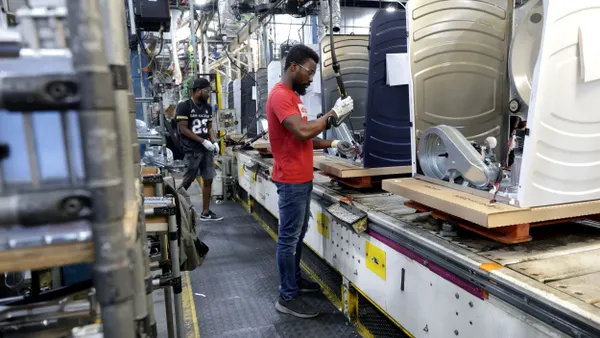Keeping talented employees in the fold is an HR and business challenge every employer faces. But if you happen to be in the caregiver industry, it’s an especially tough hurdle, if you go by the statistics.
According to Bill McPherson, executive director of franchise development at FirstLight Home Care, most reliable sources put the average turnover rates for the caregiver industry in the U.S., which varies between non-medical and skilled employees, at a conservative average of 60-65% – meaning 30-35% of employees leave every year.
That average is not a desirable number. It not only jeopardizes the caregiver industry’s primary service – quality of care – it’s also quite expensive considering the high cost of recruiting and hiring replacement workers.
And those are reasons why FirstLight, headquartered in Cincinnati, Ohio, is especially proud of its industry-beating average retention rate of 80-89% throughout its franchise system nationwide. In other words, annual turnover at FirstLight is only in the 11-20% range.
What’s the secret of FirstLight’s success? Nothing too complicated, McPherson explains.
“Since we started FirstLight five years ago, we’ve put a lot of effort into hiring the right people and taking care of them,” he says. “We know the industry has a high employee turnover rate, so we put systems and processes in place to make sure we hire the best people and keep them motivated and happy at the same time.”
While it may sound easy, that strong retention rate requires a series of proactive steps, a process that has helped the company earn several awards, including being among the Entrepreneur Top 500 franchises, Top Veterans Franchise and Forbes Top Franchises. FirstLight’s business model helps people maintain independence – whether it’s a senior who needs help with shopping, or a young adult who had surgery and can’t cook for their family.
FirstLight’s recruiting and retention process includes:
- Screening – It uses a proprietary, customized behavioral assessment created by a third party.
- Training – They have over 350 training modules available online and believe in continuous professional development.
- No independent contractors – All caregivers are employees with health benefits.
- Salary – FirstLight pays employees more than the average caregiver can earn at other companies, based on hourly rates.
“We go to market as the premium service provider, so we’re not competing on cost,” McPherson explains. “We focus on quality service and can therefore charge more and pay our employees better.”
McPherson says the critical part of the company’s strategy is working with a third party vendor (he didn’t want to name it) to create a proprietary screening tool/assessment. It assesses caregiver’s aptitudes, helps screen them for alignment to the company culture and matches them with the right family, based on the caregiver’s strengths and the client’s needs.
For example, if there is a family who needs a caregiver to take care of their parent with Alzheimer’s, the system will match a caregiver with appropriate experience with the family. Thus, caregivers don’t feel out of their comfort zone when they have to deal with difficult situations – helping retention rates.
“We have more than 350 training modules available, which caregivers can do at their own pace,” he says, adding that in any given week throughout the FirstLight franchise system, there are approximately 2,500 caregivers working.
Beyond the assessment system, McPherson says that employing workers on a permanent basis is also part of the company’s success strategy.
“If an employee doesn’t feel part of the company, like a family, they won’t necessarily be loyal to the company,” he says.
With all the buzz about workplace flexibility and work/life balance in the news these days, FirstLight caregivers work on average 21 hours a week, as the company deploys a software system that allows employees to schedule working hours ahead of time to fit with their priorities
McPherson says that FirstLight expects to continue to enjoy its high retention rates. After all, it has no plans to change its winning approach.
“Hiring the right people and treating them like our most valuable asset, which of course they are, is a great start to increasing employee loyalty and retention,” he says.












